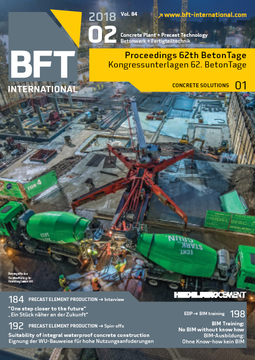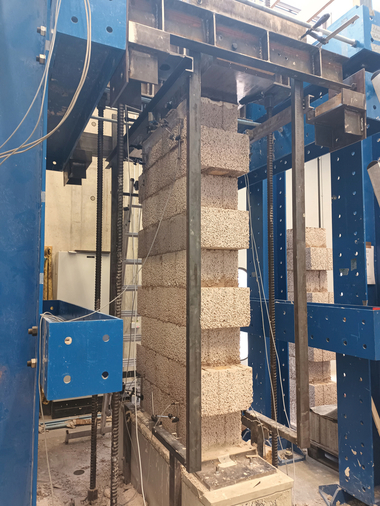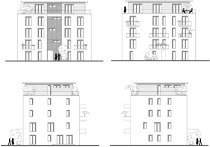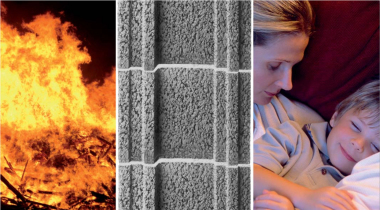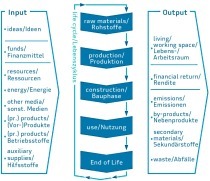Current research findings and new design model
According to the standards currently in effect, it is not possible to determine the structural capacity of non-reinforced infilling masonry walls made of lightweight concrete masonry taking into account the deformation-based membrane action by including the precise support conditions. One reason for this is the lack of a validated design method that is able to realistically map not only the equilibrium conditions but also the compatibility conditions of these systems.
The contribution therefore presents a new non-linear design method for determining the realistic uniaxial structural capacity of non-reinforced infilling masonry walls, developed on the basis of an extensive analytical and numerical analysis, and for illustrating the modes of failure of these walls.
The membrane action investigated is generated by a constraint in terms of the rigid design of the joints between the masonry walls and the adjoining reinforced concrete elements. The resulting compressive force is not an imposed load in the conventional sense but a normal force resulting from restraint action; it is a reaction, however, which requires both horizontal and the resulting vertical deformations of the wall in order to develop. In the design of the walls subject to area loading, the main focus is on including the support conditions, especially on the influence of the adjoining reinforced concrete slabs.
In the next step, the design method is translated into a design model. A standardized limit-load factor plotted as a function of important system and material design parameters requires only a few diagrams to allow the real-life and clearly structured design of lightweight concrete masonry walls for a multitude of the commonly applied geometrical, material and load configurations. Implementing the partial safety concept enables compliance with the European standards, thus ensuring the applicability of the design model.



